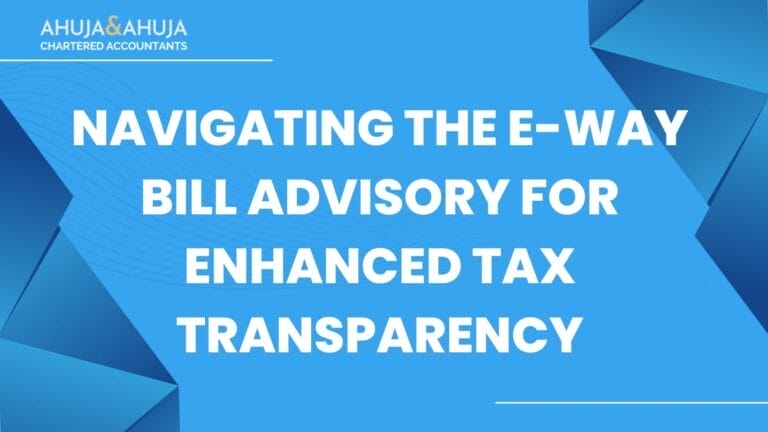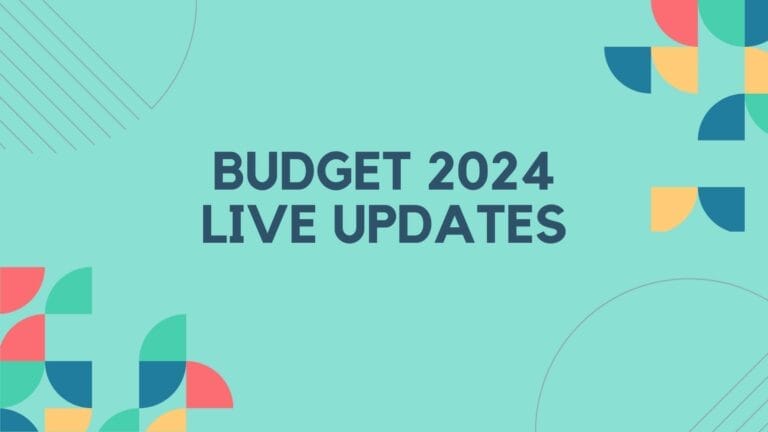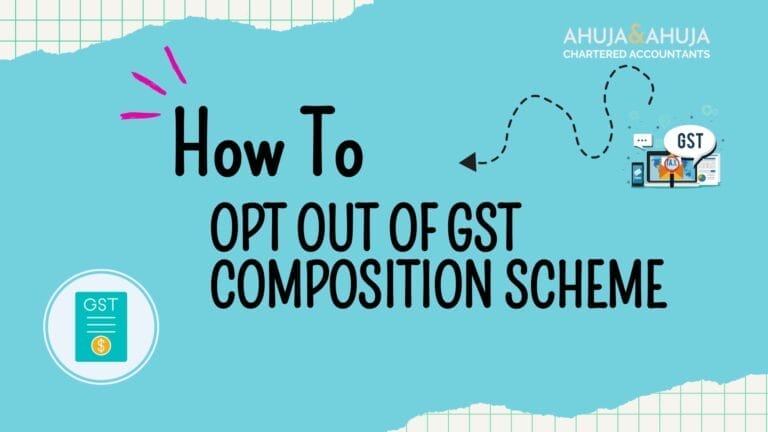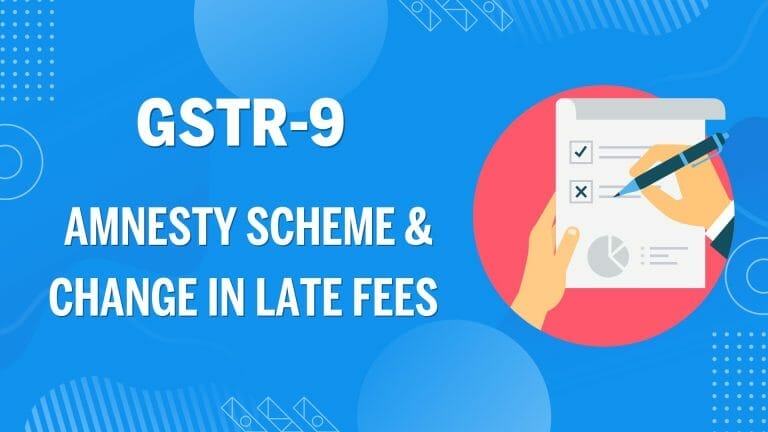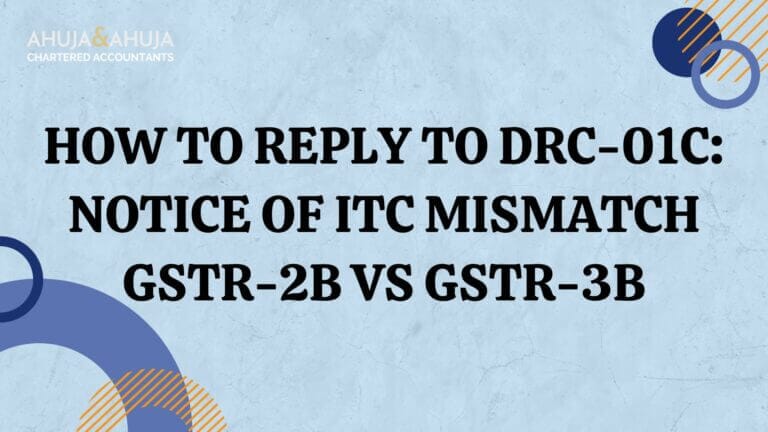Best Judgement Assessment of Non-Filers under Section 62 of the CGST Act
In the landscape of the Goods and Services Tax (GST), compliance plays an essential role in the seamless functioning of this tax regime. GST is designed to streamline the process of indirect taxation and make it straightforward and fraud-resistant.
Section 62 of the CGST Act comes into play as a crucial measure for dealing with non-compliance specifically addressing non-filers of returns.
Understanding Section 62: A Critical Tool for Compliance Enforcement
When a registered taxpayer fails to file their returns as required under the CGID Act, Section 62 allows tax officers to make a ‘best judgment assessment’ of their tax liabilities.
This legislative tool is aimed at ensuring compliance and securing the tax revenue of the government which might otherwise be lost due to non-filing.
Commencement of the Assessment Process
The mechanism under Section 62 is initiated only after certain predefined conditions are met:
- Issuance of Notice: Before proceeding with the assessment, a notice in FORM GSTR-3A is sent to the taxpayer. This notice serves as a formal reminder to the taxpayer to furnish their due returns. The notice specifies that the taxpayer has 15 days to comply by submitting their returns.
- Failure to Respond to Notice: If the taxpayer does not file the return within the stipulated period following the notice, the GST officer then moves forward with a best judgment assessment.
This decision is guided by various data sources, such as details from FORM GSTR-1, which shows outward supplies, and any other relevant financial information available to the officer.It’s worth noting the importance of responding promptly to notices under GST to avoid a best judgment assessment, which mi3ght not always be in the taxpayer’s favor. Understanding the right to personal hearing in case of an adverse order is also crucial in handling disputes in assessments.
Assessment Order and Right to Rectify
Once the assessment is made, an order is issued using FORM GST ASMT-13. This order formalizes the tax liability of the taxpayer based on the officer’s best judgment.
A key aspect here is that if the taxpayer later complies by filing their returns and paying the due tax within 30 days of this order, the assessment order is deemed withdrawn.
This provision acts as a lifeline, allowing taxpayers a chance to rectify their mistake without permanent penalty beyond interests and late fees.
Although the assessment order can be withdrawn, understanding the legal nuances, such as the stipulated value of taxable supply, is essential to ensure accurate return filing post-assessment.
The Assessment Order under Section 62 and Rectification Steps
In the second segment of our comprehensive exploration of non-filers under Section 62 of the CGST Act, we delve into the specifics of the assessment order and the consequential steps a taxpayer can undertake to ameliorate the situation post-assessment.
Issuance of the Assessment Order
Following the issuance of a notice under FORM GSTR-3A and the subsequent failure of the taxpayer to file the required returns, the GST officer proceeds to issue an assessment order.
This is carried out using FORM GST ASMT-13, which sets forth the tax officer’s best judgment assessment of the taxpayer’s liabilities considering all available data.
- Content of the Order: The order typically contains details such as assessed tax amount, applicable penalties, and the basis on which the assessment was made. This might include assumptions made from defaults, partial data submissions, or extrapolations from previous returns.
- Process after Issuance: Once the assessment order is served, the summary thereof is uploaded in FORM GST DRC-07 to ensure records are updated and the taxpayer is informed of the official stance of the tax authority.
Opportunity for Rectification: Lifelines to Correct Non-Compliance
Section 62 provides significant but limited opportunities for taxpayers to address the assessment:
- Rectification by Filing Returns: If the taxpayer files the outstanding returns along with the full payment of the assessed tax and interest within 30 days from the date of receiving the assessment order (FORM GST ASMT-13), the order is deemed to have been withdrawn. This provision allows taxpayers a crucial route to rectify their compliance lapse without enduring the full consequences of non-compliance.
- Persisting Obligations: Despite withdrawal of the assessment order, obligations such as the payment of interest under Section 50 and the late fee under Section 47 still apply. It is crucial for taxpayers to calculate these amounts accurately to ensure full compliance and prevent further penalties.
For accurate computation and understanding of penalties, accessing resources like Amnesty Scheme available under GSTR-9 may provide additional relief in terms of mitigating financial impacts for eligible cases.
Consequences of Non-Compliance Post-Assessment
Failure to take advantage of these lifelines not only solidifies the assessment order but also propels further steps by the tax authorities:
- Recovery Procedures: If the tax liability, along with interest and late fees, remains unpaid post the 30-day window, the officer may initiate recovery procedures as outlined in Sections 78 and 79 of the CGST Act. These steps might include attachment of bank accounts, auction of goods, or other legal methods to recover the tax amounts due.
- Cancellation of Registration: Persistent non-compliance can lead to harsher actions like cancellation of GST registration, which severely impacts the taxpayer’s ability to conduct business.
Best Practices to Avoid Non-Filing Situations
To prevent the stress and potential fiscal penalties associated with non-compliance under Section 62, businesses should:
- Regularly review compliance deadlines and maintain rigorous internal controls for timely GST return filings.
- Utilize technological tools and platforms to automate parts of the compliance process, reducing human error and oversight.
- Engage with professional GST advisors or accountants who can provide updated insights and reminders of filing obligations.
Advanced Compliance Strategies
To navigate the complex landscape of GST and avoid the pitfalls of non-compliance, businesses should consider adopting the following strategies:
- Automated Compliance Tools: Implementing GST-compliant accounting software can automate return filings, tax calculations, and compliance checks, minimizing human error.
- Regular Training and Updates: Conducting regular training sessions for the finance and accounts departments and staying updated with the latest GST circulars and amendments, such as those related to GST registration can prevent oversight.
- Engagement with Professionals: Collaborating with GST experts or consultants who can provide insights, handle complex filing scenarios, and advise on compliance can be invaluable.
- Proactive Engagement with Authorities: In cases of discrepancies or uncertainties, proactively reaching out to GST authorities or seeking preemptive clarifications can prevent future disputes and assessments.
Conclusion
Understanding and navigating the complexities of Section 62 of the CGST Act requires vigilance, awareness, and proactive management of GST compliance.
Through a combination of technological tools, professional advice, and continuous learning, businesses can effectively manage their GST obligations and avoid the severe consequences of non-compliance.
By understanding these real-world applications, potential risks, and strategic measures, taxpayers can better equip themselves to handle GST compliance confidently and efficiently, ensuring a more robust and compliant business operation.
This comprehensive guide, spanning three parts, seeks to provide business owners, finance professionals, and compliance officers with the knowledge and tools they need to effectively manage GST requirements and adapt to regulatory changes in India’s dynamic tax environment.
Disclaimer
The materials provided herein are solely for educational and informational purposes. No attorney/professional-client relationship is created when you access or use the site or the materials. The information presented on this site does not constitute legal or professional advice and should not be relied upon for such purposes or used as a substitute for professional or legal advice.


